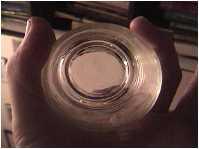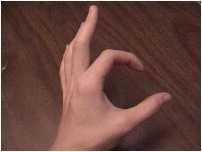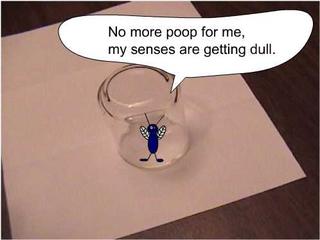First of all, for those reading this whose first reaction is " what the hell is Waldorf?" it is a schooling philosophy. The first school was founded in the 1920's by Austrian Rudolf Steiner at the behest of the CEO of the Waldorf-Astoria cigarette company (hence the name Waldorf) to serve as an educational facility for workers at his company. Steiner founded it on the philosophy that the whole child needed to be developed at every point of the education. The school works around an integration of art and science that is seldom seen in education anywhere. The basic structure is a k-8 system with a tightly knit homeroom class and a teacher that stays with you those 8 years (after eighth grade, this ends.) The days structure is a morning lesson that changes in monthly blocks (a system which some colleges use) with track classes taught by various other teachers in the afternoon. The children make their own textbooks from the subject matter that the teacher presents. As the children get older, these "morning lesson books grow in complexity until they are often artistic portfolios of essays and what the child learned during the block. The idea behind this structure is to enforce an environment where "children relate what they learn to their own experience, they are interested and engaged and what they learn becomes their own. Waldorf schools are designed to foster this kind of learning." (http://www.awsna.org/education.html) You can read more about it at Wikipedia or in a Google search for Waldorf.
It is the Waldorfian take on the teaching of sacred myth and science that I want to discuss here. In the lower grades, the sacred mythology of the world's major cultures is taught periodically in the morning lesson. For example, second graders might hear the stories of the Christian saints while third graders would be hearing the stories of the old testament. These stories, in turn, are each taught without a word to their truth or falsity, and given to the child directly on face value, with the emphasis on the fact that for the people who created these myths, the were ultimate Truth. When each story comes, in the moment that it is being taught, that is the truth-for that moment. It is the same way with religious practice. Children are invited to celebrate various holidays from all of the major religions. While studying the old testament, often the third grade class will have a sader, or build a sukkah. It is common to light advent candles in the classroom, and I have fond memories of my class' Kwanza celebration. Again, these rituals are presented on face value with the added explanation that they are truth and all-important to those who practice them. The teachers never say, this is the
right path, but they teach respect. Having gone through this system, I can accurately say what a child’s reaction to these stories and religious ceremonies are. Because young children (i.e. in the younger grades, below fourth) do not have full critical processes, are not naturally developing them yet, and for the most part
have no interest in developing them yet, they pass over these stories with a sensation of "Wow. What a good story." I can remember making no judgment as to the truth or falsity of any of these stories, but can remember understanding what the story was trying to say. For a second grader, that is enough. There is plenty of time later when the child is older to develop critical thinking skills.
As the child graduates to the fourth and fifth grades, more critical thinking naturally begins to set in, and science classes start. Early Waldorf science classes revolve around the importance of observation. They understand that learning science is not being indoctrinated to a collection of facts but the process of mastering a method, specifically, the scientific one. The principal components of the scientific method are clear observation and analysis. Waldorf classes start with observation, so, early on, conclusions take a secondary role. Fourth fifth and sixth graders will perform experiments in the classroom and make all of the observations they can. I have a distinct memory of going onto a darkened stage and the teacher lighting a candle. He told us to make all the observations we could and write them down. The class sat in a big circle, and noticed every thing they could about the candle. It is amazing how many pages of stuff you can come up with just observing a candle. You should try it sometime, really LOOKING at something. It will teach you why a picture is worth a thousand words.
At the same time, religion is still taught. The stories become more complicated, and while students still learn the stories, they also learn the history of the people. In the Ancient Roman block, students learn not only factual history, but also the roman classic legends. It is given alongside science, because it is accepted that the two both have value, and that the student can learn something from both.
As the student reaches seventh and eighth grade, annaylisis and conclusion take a more vital role in the study of science. Instead of just observing, the student is asked to make conclusions based on their observations from the experiment, as well as swallow the prepackaged dictates of the scientific establishment. Religion studies become more analytical, and are taught from a context of the history of the people who practiced the religion. Still, though, there was no dictate of ultimate truth. Science isn't right, religion isn’t wrong.
When the student graduates from grade school, it is time to develop full blown critical thinking. From then on, the student studies science from a rather unique perspective: the perspective of the scientists who discovered the theory. In 9th grade, my class duplicated Galileo’s experiments of dropping objects and from the measurements did a statistical analysis to derive the acceleration of gravity. We spent 3 weeks doing this and in the process learned how to run a good experiment, gather data, analyze the data statistically, and make conclusions. We also learned basic Newtonian mechanics, learned about acceleration from a mathematical perspective, and as a golden cookie, derived the famous number for the acceleration of Earth's gravity. We got 15.99 ft/sec^2. The actual number is 16.08 ft/sec^2. Religion is taught as it would be in any high school, from an analytical perspective.
Ultimately, I graduated from there with an excellent sense of both the world of science and the world of religion. I didn't have to have little stickers on my book that told me that evolution was a theory, I knew that everything is a theory, whether the theory said it was that Jesus created us, or whether we were by a cause and effect process known as evolution. I could look at and scrutinize both, and then decide for myself. Because the greatest asset of Waldorf education is the understanding that one, truth cannot be taught, it must be found. Two, that perception of truth changes with the ages, and the best way to make sense of it all is to non-judgmentally expose yourself to ALL of it in the proper time and order and THEN decide. All that I have to say to the evolution/creation debate is this:
By the grace of god, may the fittest theory win.








